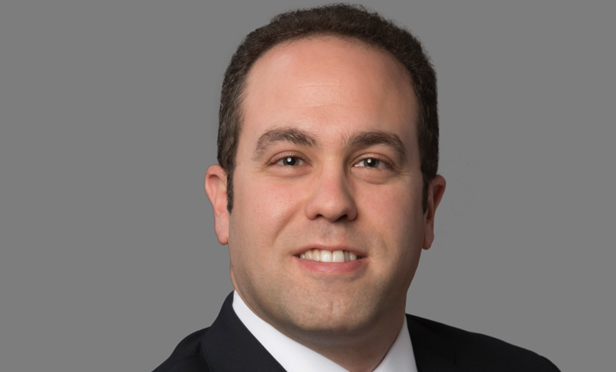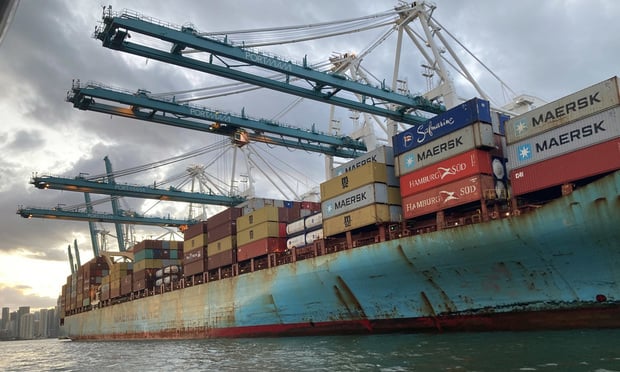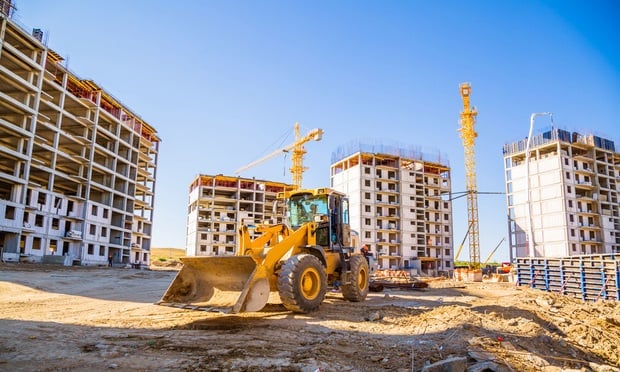
MIAMI—Miami's Brickell submarket has its own version of New York City's famous Flatiron Building and that southern iteration is coming along nicely. Vertical construction of the 64-story luxury condo tower has reached the halfway mark, with workers having just finished the skyscraper's 32nd floor.
More illustrative of the project's progress, developer CMC Group reports that 75% of Brickell Flatiron's 549 units have been sold or are currently under hard contract. And who are these buyers, exactly? About 8 out of 10 of the condo sales within the last 30 days have been with people from within the northeastern US.
At first glance, all appears to be in order. In general, Miami's condo market is flourishing with more inventory sold than not. International buyers may have become more reticent to spend, but savvy developers are marketing units to local and US buyers and second-home purchasers.
But for every story there is about a Brickell Flatiron there is also one about about a Boulevard 57—the canceled condo project in Miami's MiMo/Upper East Side neighborhood that was eventually sold to 13th Floor Investments and Tricera Capital. This February the partners received permission from the city of Miami to develop a mixed-use, 448,000-square foot apartment building with retail.
“There are buildings full of empty condos in Miami,” Aaron Singer, CEO of Bulldog Adjusters, tells GlobeSt.com. “Contractors see the opportunity to build buildings, but the influx of new buildings is creating a surplus.”
This, of course, is old news to Miami's condo developers that survived the boom-bust-boom cycle of the last several years. So as they embark on such projects as a Brickell Flatiron, they are also keeping memories of the Boulevard 57s in clear focus.
Besides the ever-shifting supply-demand dynamics, developers are also dealing with rising land prices, a scarcity of ideal sites and the scaling back of purchases by foreign buyers, once a mainstay of the Florida condo market.
Structuring Air Rights
The scarcity of prime real estate, for example, has led to more sophistication in overall legal structures, Ira Teicher, a Miami-based partner with Stroock & Stroock & Lavan LLP, tells GlobeSt.com.
“For example, I am seeing an evolution from just a straightforward, say, condo structure to one that involves air rights for mixed-use development.” In such deals a developer creates different air parcels and puts together separate uses to create a mixed-use vertical development, he says. The building looks ordinary from the outside but it has different lobby areas for the various uses — one for, say, the 10 stories of multifamily or condos and another for a hotel. In the case of condos, each owner has a stake in the project but what they really own is the air — one owns the vertical plane from, for instance, 16 feet above sea level to 35 feet, Teicher explains. The person above that owns the air to 45 feet and so on. “The owners then enter into some sort of Reciprocal Easement Access Agreement to synthetically replicate the ownership structure you would see in a normal condo,” he says.
“It is a fascinating structure and I think we will see more and more of this in South Florida.”
Adaptive Reuse Gets Creative
Other developers are getting creative with adaptive reuse and savvy zoning for a successful project. A common approach is to acquire an older existing condo building and redesign or demolish it to construct a new condo tower, Jimmy Sinis, senior associate and design manager at Stantec's Miami office, tells GlobeSt.com. “In some cases it's taking a hospital and converting it into a luxury residential condo.” One example, he says, is the adaptive reuse of the former Miami Heart Institute into the luxury Ritz-Carlton Residences in Miami Beach. “This dynamic structure allowed for diverse views from multiple terraces and for varying unit types.”
Of course, much depends on where the property is located. In the Miami CBD –primarily downtown and Brickell as well as Edgewater and Wynwood — developers must be creative with current zoning codes and/or acquire enough land or older buildings, or a mix thereof to make a project work, Michael Fay, principal and managing director of Avison Young's Miami operations, tells GlobeSt.com. An example Fay likes is Point View in Brickell, a condo building that is currently only 12 stories, but has zoning in place for a project much grander in size. “Outside of the CBD, there are more options for acquiring older buildings that are scrape-and-build opportunities with zoning that allows taller, denser buildings,” he says.
Indeed, many developers that traditionally build in Miami are also looking to buy land in the west or north of the city, where limited new development exists and a larger pool of domestic buyers reside, Nicolas Guzman, CEO of Empresas Guzman & Larrain, tells GlobeSt.com, pointing to the company's Calabria Residences in Miramar as an example. Also, he adds, boutique condo development is a popular strategy as it reduces risks for developers with fewer needed sales and a quicker delivery time frame. “That is our current focus in South Florida, with the present development of our 38-unit One Bay Residences in Edgewater and will continue to be the objective as the market struggles with reduced foreign buyers and a need to target end users to reap steady sales,” he says.
A New Type of Buyer
To be sure, the changing buyer profile in Miami's residential community has become almost as significant a market force as the cost and scarcity of land. Once a magnet for foreigners, particularly from Latin America, today Miami's condo market is more focused on local and US residents. This, too, has ramifications for developers. “An important thing to note is that this category of buyers will not be in a position to speculate on a building that is years away from completion,” Henry Torres, founder, president and CEO of the Astor Cos., told GlobeSt.com in an earlier interview. “They will focus on projects that are nearing completion so they can close and move into their new residences as soon as possible.”
Want to continue reading?
Become a Free ALM Digital Reader.
Once you are an ALM Digital Member, you’ll receive:
- Breaking commercial real estate news and analysis, on-site and via our newsletters and custom alerts
- Educational webcasts, white papers, and ebooks from industry thought leaders
- Critical coverage of the property casualty insurance and financial advisory markets on our other ALM sites, PropertyCasualty360 and ThinkAdvisor
Already have an account? Sign In Now
*May exclude premium content© 2025 ALM Global, LLC, All Rights Reserved. Request academic re-use from www.copyright.com. All other uses, submit a request to [email protected]. For more information visit Asset & Logo Licensing.








